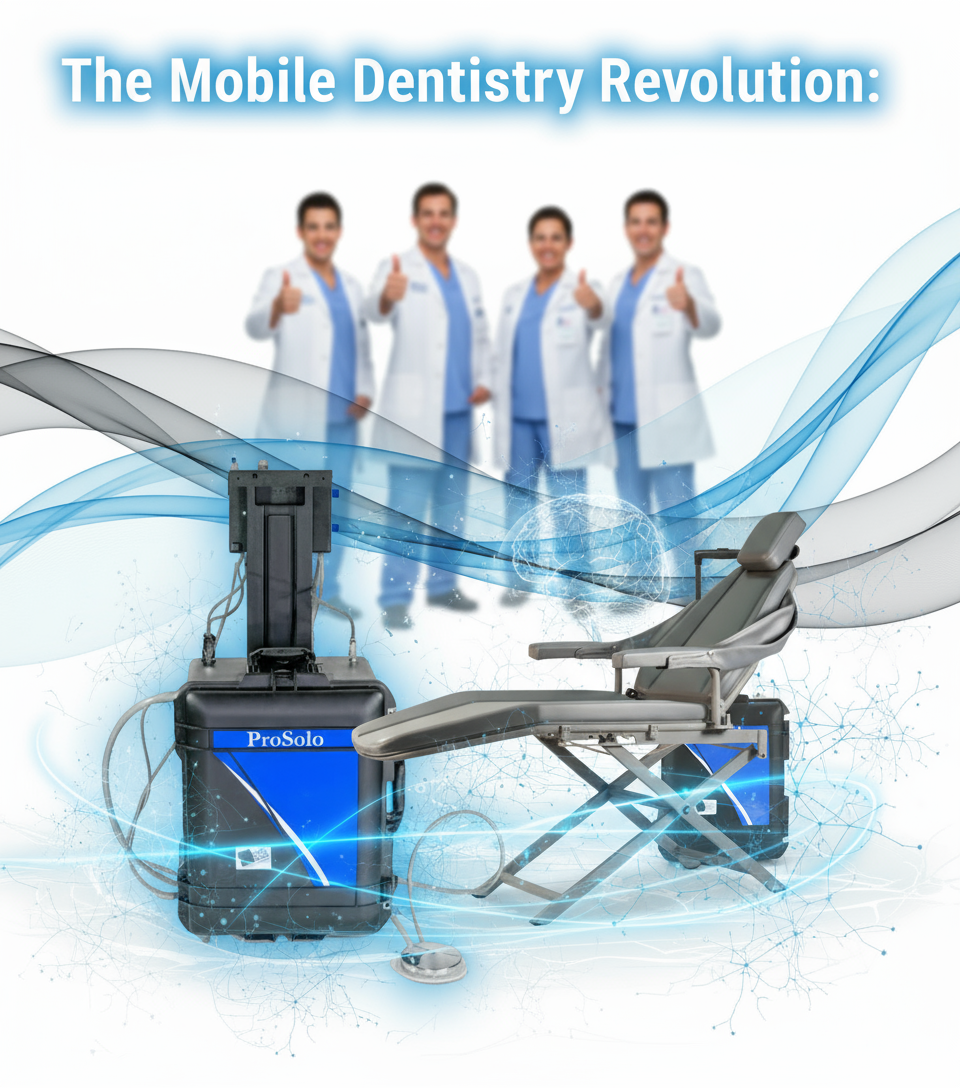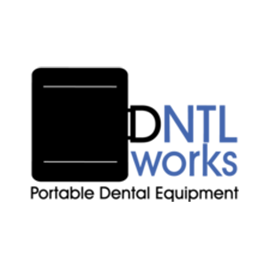
Mobile Dentistry ROI: $35K Startup vs $500K Traditional Practice
Share
"I used to do mobile dentistry. I still do, but I used to, too." – Probably a dentist who discovered the ROI
The Uncomfortable Truth About Access to Dental Care
Here's something that'll make you grind your teeth: 74 million Americans live in dental health professional shortage areas. That's not a typo. That's roughly the population of France sitting at home with toothaches, untreated cavities, and zero access to preventive care.
Now, before you think this is another sob story about healthcare deserts, let me hit you with the dopamine spike: This is the biggest market opportunity in dentistry since someone figured out people would pay to have their teeth whitened.
The Neuroscience of Why Mobile Dentistry Works (And Why Your Brain Hates Change)
Dr. Andrew Huberman talks about how our nervous system is wired to avoid novelty and seek familiar patterns. Traditional dental practices bank on this – literally. You build a million-dollar clinic, patients come to you, rinse and repeat.
But here's where it gets interesting: The prefrontal cortex, that fancy decision-making center in your brain, lights up like a Christmas tree when you flip the script. When you bring dentistry TO the patient instead of making them come to you, you're not just providing convenience—you're removing every friction point that triggers their avoidance response.
Think about it:
- No transportation barriers (amygdala: relaxed)
- No waiting rooms full of anxiety (cortisol: lowered)
- No taking time off work (financial stress: eliminated)
- Familiar environment (parasympathetic system: activated)
This isn't just good business. This is applied behavioral neuroscience.
The Value Equation Applied to Mobile Dentistry
Lets breaks down value into a simple equation:
Value = (Dream Outcome × Perceived Likelihood of Achievement) / (Time Delay × Effort & Sacrifice)
Let's run mobile dentistry through this:
Dream Outcome:
Nursing home with 200 residents gets comprehensive dental care without transportation logistics. That's 200 patients × $300 average visit = $60,000 in revenue from ONE location.
Perceived Likelihood:
When you show up with a ProCart III that's more equipped than some brick-and-mortar clinics, you're not making promises. You're delivering proof.
Time Delay:
Traditional: Wait 6-8 months to build out a clinic, get permits, hire staff. Mobile: You can be treating patients in 30 days. Time to revenue just dropped 80%.
Effort & Sacrifice:
Traditional: $500K-$1M in buildout, overhead that'll make you cry, geographic limitations. Mobile: $12K-$15K for premium equipment, operational flexibility, multiple revenue streams.
The value multiplier isn't linear. It's exponential.
The Cold, Hard Economics (That'll Warm Your Accountant's Heart)
Let me break down numbers that would make Dr. Peter Attia want to study them under a microscope:
Traditional Practice Economics:
- Average startup cost: $500,000 - $1,000,000
- Monthly overhead: $50,000 - $75,000
- Break-even timeline: 18-24 months
- Patient capacity: 20-25/day (if you're hustling)
- Geographic limitation: 15-mile radius realistically
Mobile Practice Economics:
- Startup cost: $25,000 - $50,000 (including premium equipment)
- Monthly overhead: $8,000 - $15,000
- Break-even timeline: 3-6 months
- Patient capacity: 20-30/day (you're going where the volume is)
- Geographic limitation: Whatever your gas tank allows
But here's the kicker that nobody talks about: CONTRACT STABILITY.
When you set up with a nursing home, correctional facility, or school district, you're not fighting for individual patient appointments. You're signing 1-3 year contracts with guaranteed patient volume. That's not a practice—that's a revenue machine with predictable cash flow.
The Longevity Play: Building a Practice That Outlasts You
Dr. Steven Gundry talks about building health that lasts. Let's talk about building a practice that lasts.
Traditional practices are geographic prisoners. You bought a building in a location, and now you're married to it. If that neighborhood changes, if that shopping center declines, if a competitor moves in—you're stuck.
Mobile dentistry is location-arbitrage personified. Your "office" moves to where the demand is highest. Economic opportunity is dynamic, and so are you.
Plus—and this is the part that makes me geek out—mobile practices have higher exit multiples when it's time to sell. Why? Because you're not selling a building that needs inspection and financing. You're selling:
- Established contracts
- Proven systems
- Portable assets
- Transferable relationships
The Data That Changed My Mind (And Should Change Yours)
I'll be honest: Five years ago, I thought mobile dentistry was for dental school grads who couldn't afford a real practice. Then I looked at the data:
- Mobile dentists report 32% higher job satisfaction (less overhead stress)
- Average mobile practice revenue: $750K - $1.2M annually
- Patient no-show rate: 4-6% vs. 15-20% in traditional practices
- Years to practice ownership: 2-3 years vs. 8-12 years traditional
- Work-life balance score: 8.2/10 vs. 5.1/10 traditional
That last one hit me. You're not chained to a building. You set your schedule based on your contracts. Want to take Fridays off? Restructure your weekly route. Want to work four 10-hour days? Design it that way.
The Uncomfortable Questions You Need to Ask
Here's where the prefrontal cortex starts working overtime:
- "Can I really provide the same quality of care mobile vs. clinic?"
Modern mobile equipment (like the ProCart III) has high-speed handpieces, built-in suction, LED lighting, and ultrasonic scalers. We're not talking about a drill and a prayer. We're talking about fully self-contained operatories that some traditional clinics would envy.
- "What about complex procedures?"
91% of dental procedures are restorative, preventive, or diagnostic. All of which are completely mobile-capable. The 9% that aren't? Refer them out and collect your referral fee.
- "Is this sustainable long-term?"
The aging population is growing 3× faster than the general population. Long-term care facilities are multiplying. Schools are mandating dental screenings. Correctional facilities are federally required to provide dental care.
The tailwind isn't just favorable. It's a category-5 hurricane pushing you forward.
The Framework for Making This Decision
Dr. F. Perry Wilson teaches us to look at scientific evidence systematically. Let's apply that here:
What would need to be true for mobile dentistry to NOT work?
- Equipment would need to be substandard (it's not)
- Patient volume would need to be inconsistent (contracts prevent this)
- Reimbursement would need to be lower (it's actually the same or higher for institutional care)
- Regulations would need to be prohibitive (they're identical to traditional practice)
- Market demand would need to be shrinking (it's exploding)
I can't find a single data point that supports mobile dentistry being inferior. Not one.
The Moment of Clarity
"I'm against picketing, but I don't know how to show it."
Sometimes the best opportunities are hiding in plain sight, and we don't see them because we're too busy looking for complicated solutions.
Mobile dentistry isn't complicated. It's elegant. You take equipment that works, you bring it to people who need it, and you eliminate every barrier that keeps them from getting care.
Your Next Steps (Because Education Without Action is Just Entertainment)
- Calculate your break-even scenario – Be honest about startup costs vs. monthly overhead
- Research your local market – How many nursing homes, schools, and facilities are within 30 miles?
- Talk to your state dental board – Understand any mobile-specific regulations (spoiler: there usually aren't any)
- Test the equipment – Don't take my word for it. See a ProCart III in action. Touch it. Use it. Believe it.
The science is clear. The economics are compelling. The market timing is perfect.
The only variable left is you.
What's Next in This Series
Part 2: The Equipment Deep-Dive – We're going to geek out on specifications, compare delivery systems, and I'll show you exactly what separates a $5K unit from a $12K unit (and why it matters for your ROI)
Part 3: Setting Up Your Mobile Practice – Legal structure, contracts, scheduling systems, and the exact checklist I wish someone gave me
Part 4: Patient Care Protocols in Non-Traditional Settings – How to maintain clinical excellence when treating patients in nursing homes, schools, and other environments
Part 5: Scaling and Exit Strategy – Building a practice that works without you, and understanding your exit options
Ready to stop wondering and start doing? The DNTLworks team has been building mobile dental equipment since 1986 – longer than some of you have been alive. They've seen every iteration, every failure, every success. Learn more at dntlworks.com
Drop a comment: What's the biggest mental barrier keeping you from going mobile?
